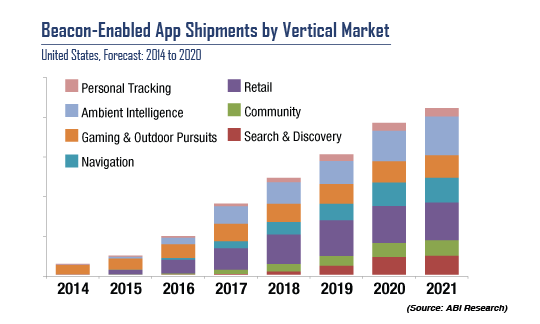Ambient Intelligence (AmI) is a digital environment that subtly reacts, adapts, and responds to the presence of humans. This implies a setting that can foresee users’ requirements, recognising changes in context and providing services that are anticipatory, adaptive, and personalised. It seamlessly integrates into everyday activities and objects, employing a range of advanced technologies including Artificial Intelligence (AI), the Internet of Things (IoT), ubiquitous computing and context-aware computing.
Sensor beacons play a pivotal role in achieving ambient intelligence. Equipped with technologies such as Bluetooth Low Energy (BLE), sensor beacons gather environmental data and pinpoint the location or presence of objects or people. For instance, in a smart home environment, sensor beacons might identify when a person enters or leaves a room, and cause lighting to be adjusted automatically. In a retail setting, they can supply customers with personalised advertisements or detailed product information when they approach a specific product.
Ambient intelligence mixes several key technological and conceptual components, including Industry 4.0, the Physical Web, IoT and the smart home.
Industry 4.0 marks the fourth industrial revolution, characterised by heightened digitisation and interconnectivity of products, business models, and value chains. It incorporates elements like IoT, cloud computing, and cyber-physical systems, and ambient intelligence is an integral part of this transformation, facilitating intelligent, adaptive interactions within industrial settings.
The Physical Web concept involves the integration of interconnected smart objects into the World Wide Web. Objects equipped with sensor beacons can be viewed as part of the Physical Web, generating real-world interactions specific to certain locations via the internet. Moreover, ambient intelligence aligns closely with the broader concept of the Internet of Things (IoT), a network of physical devices embedded with sensors and software to connect, communicate and exchange data over the internet. Here, devices not only communicate and connect but also adapt and anticipate user needs.
The smart home concept involves leveraging IoT, AI, and other advanced technologies to automate numerous features, from lighting and temperature to security. Ambient intelligence, in this context, doesn’t just automate homes; it makes them sensitive and responsive to the inhabitants’ requirements and contexts. This makes ambient intelligence a pivotal part of smart homes, contributing to their adaptive, intelligent functioning.
